#Pannonian
Text
『 Sovembar 』
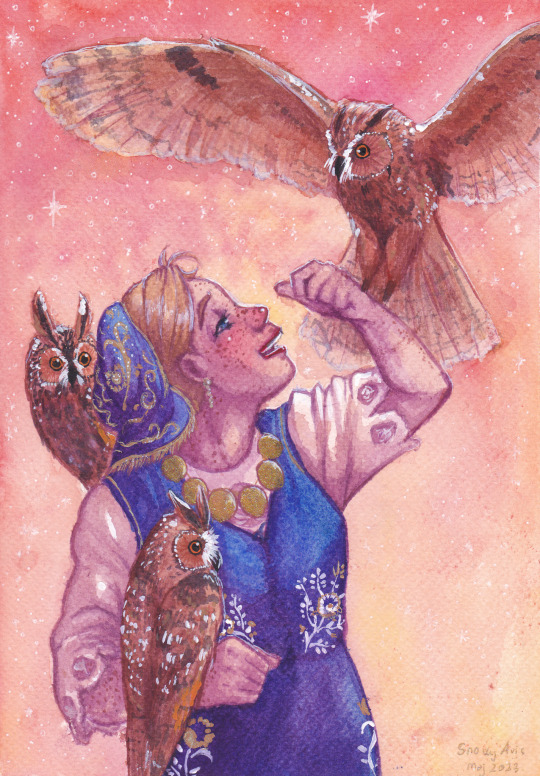
The city of Kikinda (eastern Vojvodina, Serbia) is one of the biggest winter roost sites of the long-eared owl (Asio otus) in the world. The owls can be seen perched on trees in the town. In November, the educational program "Sovembar" is organised in Kikinda.
In 2009, ornithologists counted up to 743 owls in Kikinda's city center. The town has been unofficially claimed as the Owl Capital.
The term "Sovembar" comes from "sova" = owl in Serbian, and "novembar"
The girl in my painting is wearing folk clothes from Kikinda.
#art#water colour art#water colour#owl#kikinda#folklore#birdwatching#folk dress#serbia#serbian#vojvodina#balkans#slavs#slavic#Pannonian#nature#city birds#south slavic
66 notes
·
View notes
Photo

YAY
Next one is finished :D
For now. Except I spot mistakes of course.
17 notes
·
View notes
Photo

Relief map of Hungary and the Pannonian Basin.
154 notes
·
View notes
Text
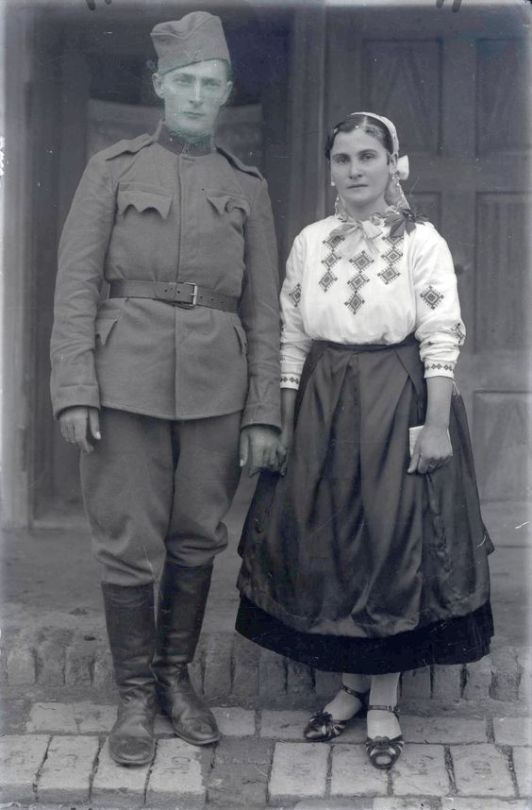
Couple Rusnaks [Pannonian Rusyns] from Vojvodina (region Bačka), Yugoslavia.
Source: https://pinterest.com/pin/746260600773628063/
#pannonian rusyns#rusyns#folk costume#historical photos#20th century#vojvodina#bačka#serbia#yugoslavia#slavic#balkans#rusnaks#ruthenians
2 notes
·
View notes
Text
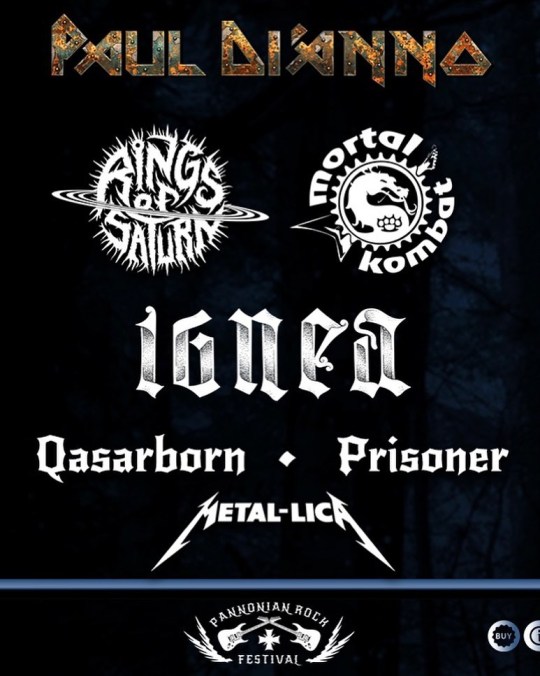
"The full-scale war postponed this announcement for more than 3 months. But, better late than never!
We'll perform at Pannonian Rock Festival on August 11th, and this will be our first ever show in Croatia.
In these turbulent times, nothing can be certain. But we hope to stay alive, make it to the festival, and bring 🇺🇦 Ukrainian 🇺🇦 metal culture closer to you.
Stay tuned for more announcements!
2 notes
·
View notes
Text
Ethnic Composition of Medieval Hungary
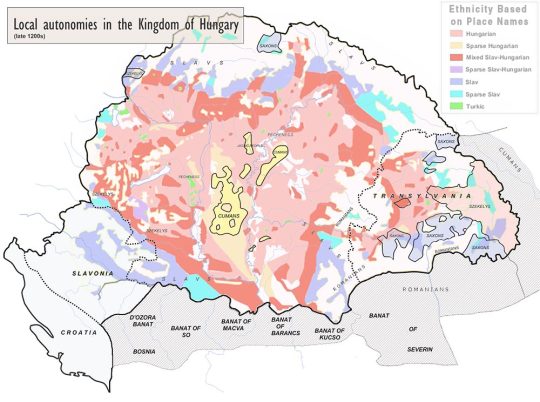
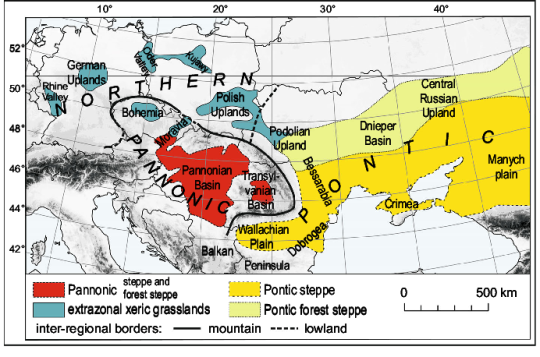
Before the arrival of the Magyars, the Pannonian Basin was inhabited by many different peoples. Among them were various nomadic societies like the Avars, Bulgars, and Huns who settled this vast steppe land. Sedentary societies such as the Slavs, Vlachs, and Germanic peoples also co-existed, sometimes tumultuously, alongside their steppe neighbors.
In the 9th century AD, the Magyars invaded the Pannonian Basin and established themselves as its rulers. It is important to note that the early Hungarians were not a distinct ethnic group, but rather a military alliance comprising multiple Uralic, Iranian, and Turkic tribes. By the 11th century AD, the Magyars had adopted a sedentary way of life and embraced Latin Christianity. Over time, the diverse inhabitants of the Pannonian Basin began to intermingle, eventually forming a cohesive ethnic group that is now recognized as the Hungarian nation.
Sources of the images are specified below each respective picture.
#migration#magyar#hungarian#european#steppe nomad#Carpathian basin#pannonian basin#pannonia#slavs#german#vlach#anthropology#history
0 notes
Text
Croatia's PANNONIAN ROCK FESTIVAL Moves To New Location, 2024 Lineup Includes VADER, NERVOSA And More
Croatia’s Panonian Rock Festival has announced that their will be moving to a new location for their 2024 edition, along with announcing first batch of bands.
Festival organizers said in a statement: “First of all, we want to thank the city of Osijek for the trust and recognition of the potential of the Pannonian Rock Festival. In addition to better traffic connectivity and easier accommodation…

View On WordPress
0 notes
Text
finally watched barbie last night. i think it was refreshing to see gerwig's exploration of population exchange in europe during the chalcolithic age. barbies are clearly coded to be early european farmers, living in a comfortable yet stagnant environment of europe at the tail end of the ice age, with a culture revolving around female fertility (notice the second character introduced is a pregnant barbie). the second sequence shows up ken(gosling)'s enterance into the story on beach, mirroring the arrival of western steppe herder cultures as glaciers in europe retreated.

once barbie and ken venture into the "real world" (prohpetic vision of the bronze age), ken adopts advanced technologies like the horse (horse), patriatrchy (worship of a male solar deity), and cars (the wheel, expoundable into the horse-driven chariot). his donning of the fringe jacket and cowboy hat stir within the audience a yearning for westward expansion, from the pontic steppe through the pannonian basin and beyond.

ken transforming barbieland into the kendom mirrors the replacement of early european farmer (vinča, varna cultures etc.) with corded ware and bell beaker cultures, settled iterations of the kens' previously pastoral culture. the only barbie not assimilated into the new cultral zeitgeist is weird barbie (basques), herself a cultural isolate even compared to other barbies pre-invasion.
the final battle scene between the two ken factions places particular focus on archery, hallmark of the mongol civilization, which was the last of the steppe invasions of europe. notice in this situation, gerwig's bravery in correctly having ken (asian) represent the kingdom of hungary (asian), whereas ken (gosling) is of course the ever-lasting scythian spirit emanating from the steppe. some scholars have suggested the light-blue void where the last battle takes place to be a metaphor tengri.
some other stuff happened as well but i didn't really get how that fit into the greater story i guess. what was the deal with the old jewish lady LOL !
5K notes
·
View notes
Text
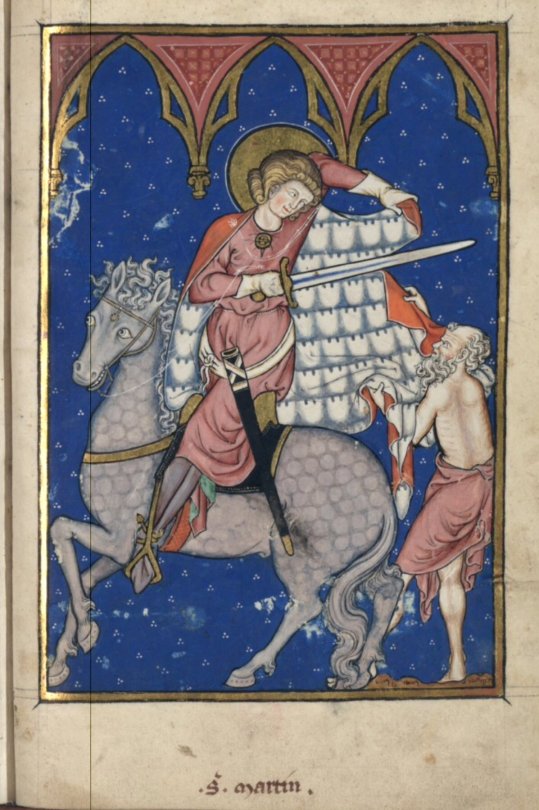
Today (Nov. 11th) is Martinmas, the feast of St Martin of Tours, an important festival in medieval Europe on the very cusp of winter.
A 4th century Pannonian (present day Hungary) soldier, Martin's conversion to Christianity led him to give up his life in the Roman army. As Bishop of Tours he founded the famous abbey of Marmoutiers. Well known for his charity, here St. Martin is depicted cutting his cloak in half to share with a beggar.
Today he is venerated in the church as the patron saint of the poor, soldiers and conscientious objectors.
(Source: BnF NAF 16251: Images de la vie du Christ et des saints. 13th century (c. 1280-1290); f.89r)
164 notes
·
View notes
Text





Deliblato Sands is a large sand area covering around 300 km² of ground in Vojvodina province, Serbia. It is located in southern Banat, situated between the river Danube and the southwestern slopes of the Carpathian Mountains.
The Deliblato Sands is the largest sandy terrain in Europe, once part of a vast prehistoric desert, having originated from the withdrawal of the Pannonian Sea. They are home to many endemic species of plants and animals which are rare or endangered in Europe and globally. Due to its forest and surroundings, it was declared a special nature reserve. On a national level, it represents a natural asset of special importance falling under protection category I.
And my favourite place to walk. 💚
89 notes
·
View notes
Text
Pan-Turkism has been characterized by pseudoscientific theories known as Pseudo-Turkology.[64][65] Though dismissed in serious scholarship, scholars promoting such theories, often known as Pseudo-Turkologists,[64] have in recent times emerged among every Turkic nationality.[66][67] A leading light among them is Murad Adzhi, who insists that two hundred thousand years ago, "an advanced people of Turkic blood" were living in the Altai Mountains. These tall and blonde Turks are supposed to have founded the world's first state, Idel-Ural, 35,000 years ago, and to have migrated as far as the Americas.[66]
According to theories like the Turkish History Thesis, promoted by pseudo-scholars, the Turkic peoples are supposed to have migrated from Central Asia to the Middle East in the Neolithic. The Hittites, Sumerians, Babylonians, and ancient Egyptians are here classified as being of Turkic origin.[65][66][67][68] The Kurgan cultures of the early Bronze Age up to more recent times are also typically ascribed to Turkic peoples by pan-Turkic pseudoscholars, such as Ismail Miziev.[69] Non-Turkic peoples typically classified as Turkic, Turkish, Proto-Turkish or Turanian include Huns, Scythians, Sakas, Cimmerians, Medes, Parthians, Pannonian Avars, Caucasian Albanians, and various ethnic minorities in Turkic countries, such as Kurds.[69][70][71][67][68] Adzhi also considers Alans, Goths, Burgundians, Saxons, Alemanni, Angles, Lombards, and many Russians as Turks.[66] Only a few prominent peoples in history, such as Jews, Chinese people, Armenians, Greeks, Persians, and Scandinavians are considered non-Turkic by Adzhi.[66]
Philologist Mirfatyh Zakiev, former Chairman of the Supreme Soviet of the Tatar ASSR, has published hundreds of "scientific" works on the subject, suggesting Turkic origins of the Sumerian, Greek, Icelandic, Etruscan and Minoan languages. Zakiev contends that "proto-Turkish is the starting point of the Indo-European languages".[66] Not only peoples and cultures, but also prominent individuals, such as Saint George, Peter the Great, Mikhail Kutuzov and Fyodor Dostoevsky, are proclaimed to have been "of Turkic origin".[66] As such the Turkic peoples are supposed to have once been the "benevolent conquerors" of the peoples of most of Eurasia, who thus owe them "a huge cultural debt".[66][72]
The pseudoscientific Sun Language Theory states that all human languages are descendants of a proto-Turkic language and was developed by the Turkish president Mustafa Kemal Atatürk during the 1930s.[73] Kairat Zakiryanov considers the Japanese and Kazakhgene pools to be identical.[74] Several Turkish academics (Şevket Koçsoy, Özkan İzgi, Emel Esin) claim that Zhou dynasty were of Turkic origins.[75][76][77][78]
what is going on with the turkish
340 notes
·
View notes
Text

This artifact, an ancient Roman brick with Jewish symbols (probably a burial plaque), was found in one of the graves at a necropolis from the 8th-9th century, at Čibska šuma archaeological site near Čelarevo in northern Serbia. At the site, alongside Turkic and Slavic graves, some bricks were also found with engraved inscriptions translated as Jehuda or Yahweh and Israel. According to archaeologists, they belongs to a nomadic tribe of unknown origin, that practiced Judaism. These people came from the east, most likely from the Pontic steppes and Central Asia along with Avars and settled in vast plains of the Pannonian basin in present-day northern Serbia and eastern Hungary.
#jewish#serbia#hungary#archeology#turkic#central asia#hm would like to know more about this#is there some link to the Khazars?
208 notes
·
View notes
Text

Exaggerated relief map of East-Central Europe.
It's so cosy living in the Pannonian Plain, protected from the World by mountains and seas on all sides.
#czechia#slovakia#hungary#romania#serbia#croatia#bulgaria#macedonia#albania#kosovo#montenegro#bosnia#austria#poland#ukraine#moldova#relief map
138 notes
·
View notes
Text
A new species of stalked puffball, a gasteroid fungus, has been named after the "Shai-Hulud" sandworms of Frank Herbert's iconic science fiction novel series "Dune."
Discovered in Hungary, the new species, Tulostoma shaihuludii, is one of four new species in the genus Tulostoma that were discovered and published in the journal MycoKeys. The other species are Tulostoma dunense, Tulostoma hungaricum, and Tulostoma sacchariolens.
Researchers chose the name due to the worm-like appearance of the species' fruiting body, coupled with the sandy habitat of the Pannonian Steppe, where it was discovered.
The team consisted of Péter Finy (Eötvös Loránd University, Hungary), Mikael Jeppson (University of Gothenburg, Sweden), Dániel G. Knapp (Linnaeus University, Sweden), Viktor Papp (Hungarian University of Agriculture and Life Sciences, Hungary), László Albert (Hungarian Mycological Society, Hungary), István Ölvedi (Hungarian Mycological Society, Hungary), Károly Bóka (Eötvös Loránd University, Hungary), Dóra Varga (Eötvös Loránd University, Hungary), Gábor M. Kovács (Eötvös Loránd University, Hungary), and Bálint Dima (Eötvös Loránd University, Hungary).
Continue Reading.
63 notes
·
View notes
Photo
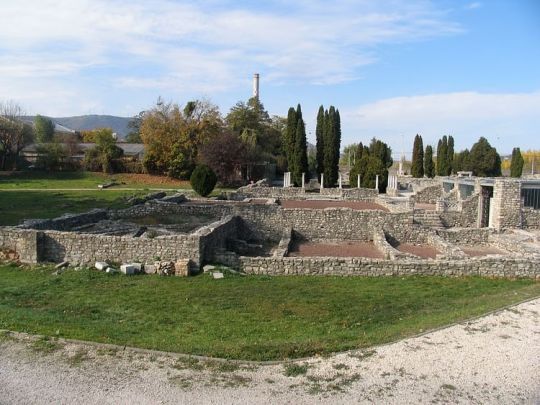
Legions of Pannonia
Located west of the Danube, Pannonia was essential for the protection of the Roman Empire's eastern frontier. It had been occupied since 9 BCE but did not willingly accept Roman authority. Pannonia and Dalmatia revolted in 6 CE, and it would take three years and a total of eleven legions to finally bring Roman victory in 9 CE. To ensure peace, four legions were assigned to Pannonia: X Gemina, XIV Gemina, I Adiutrix, and II Adiutrix.
The Pannonian Revolt
After years of conflict with Rome, Pannonia had finally fallen under Roman control in 9 BCE. The uneasy peace that followed would not last long. After the Roman commander and future emperor Tiberius (r. 14-37 CE) withdrew legions from Pannonia and Dalmatia for his Germanic campaign in 5 CE, the two provinces seized the opportunity to rise up and revolt. The Pannonian rebel army struck first, marching into Macedonia. Meanwhile, Dalmatian rebels began to raid neighboring towns, attacking Roman auxiliaries and massacring Roman citizens. With this initial success, more and more Dalmatians joined in the cause. Eventually, the rebels would number over 200,000 – one-fourth of their combined population. Although surrounded by the rebellious army, the governor of Dalmatia, Marcus Messalinus, and cohorts of the 20th legion were able to rout the rebels. After the Pannonians laid siege to Sirmium (in modern Serbia), the governor of Moesia, Caecina Severus, and his legions marched westward to meet the Pannonian commander and his army and defeated him.
With the Dalmatian attack on Salonae (in modern Croatia) and much of the Adriatic coast in rebel control, panic across Italy forced the Roman emperor Augustus (r. 27 BCE - 14 CE) to recall Tiberius. With Legio VIII Augusta, Legio XI Hispana, Legio XIV Gemina Martia Victrix, Legio XV Apollinaris, and cohorts of the Legio XX, he marched into the rebelling provinces. In addition to Tiberius, Augustus sent the young Germanicus (15 BCE - 19 CE) to the Balkans with a force of evocati and non-citizen troops. Meanwhile, Aulus Caecina Severus and Plautius Silvanus arrived from the East with five legions. In total, the Roman army numbered 10 legions, 70 cohorts of auxiliary, 14 cavalry wings, and 10,000 evocati.
The Pannonians abandoned their plan to march on Rome, and the Dalmatian commander grew suspicious of his counterpart's loyalty to the cause. The Pannonian leader was captured, put on trial, found guilty, and executed. After this, the Roman army laid siege to several Dalmatian towns. Casualties were high on both sides, and it took one-third of the Roman army to finally suppress the uprising. Before the Dalmatian commander was led off to live the remainder of his life in house arrest, he had one final comment, blaming Rome for the war: "We are your flocks, yet you didn’t send shepherds to look after us, you sent wolves." (quoted in Dando-Collins, 234) Writing years later, the historian Suetonius (c. 69 - c. 130/140 CE) wrote in his biography of Tiberius about the seriousness of the rebellion. He said the revolt "proved to be the most bitterly fought of all foreign wars since Rome had defeated Carthage" (Twelve Caesars, 114).
In his The Complete Roman Legions, historian Nigel Pollard places four legions permanently in Pannonia:
Legio X Gemina
Legio XIV Gemina
Legio I Adiutrix
Legio II Adiutrix
Continue reading...
26 notes
·
View notes
Text
I love how you could make up a plausible alt history where almost any culture occupied the Pannonian plain to the present day. Celts, Latins, Avars, Dacians, Scythians, Goths, Bulgars, Lombards, Slavs, Huns, even the Mongols all seem to have cruised through there at one time or another. The Magyars ultimately won that particular game of musical chairs, but so many others could have instead!
32 notes
·
View notes